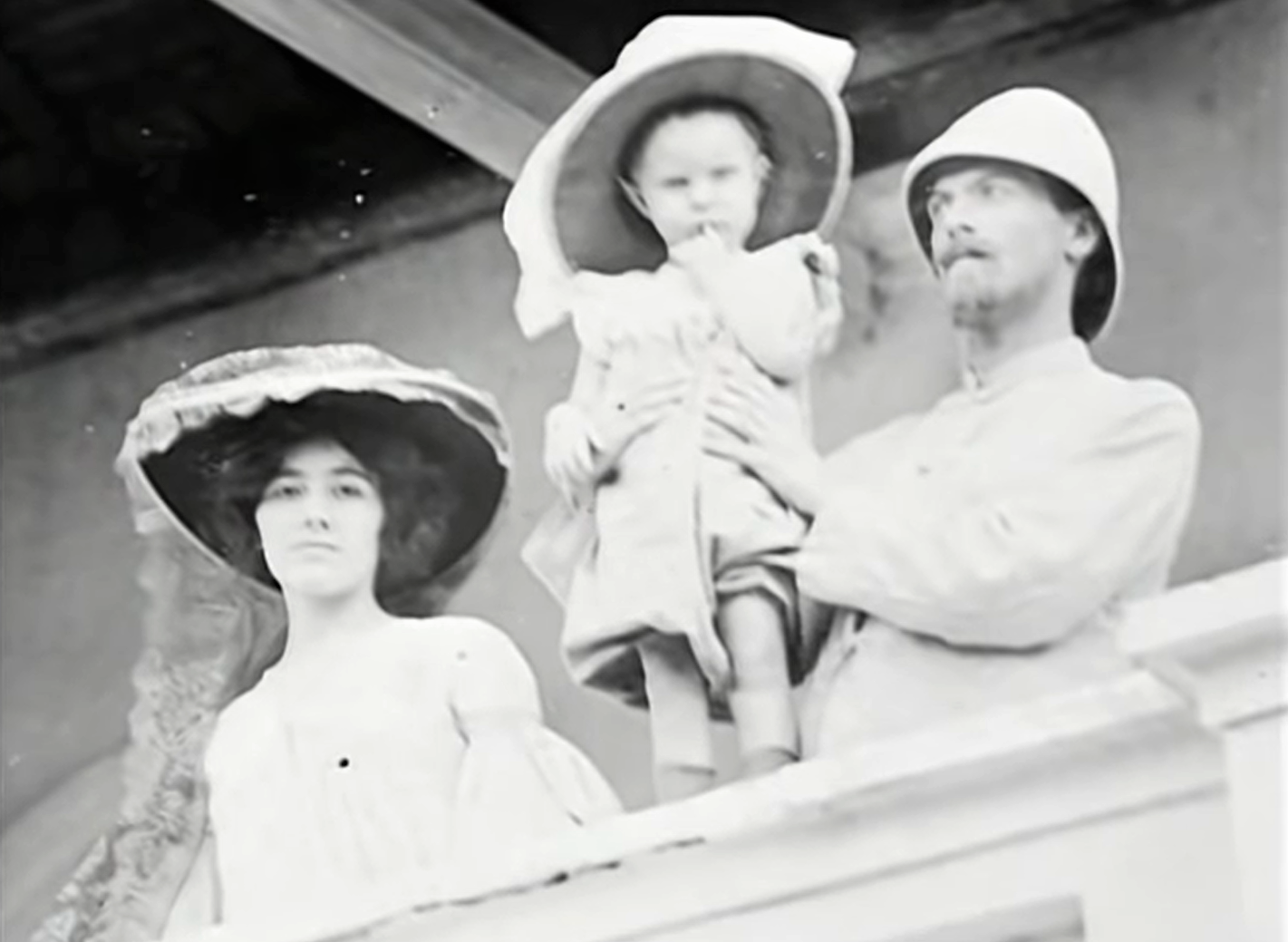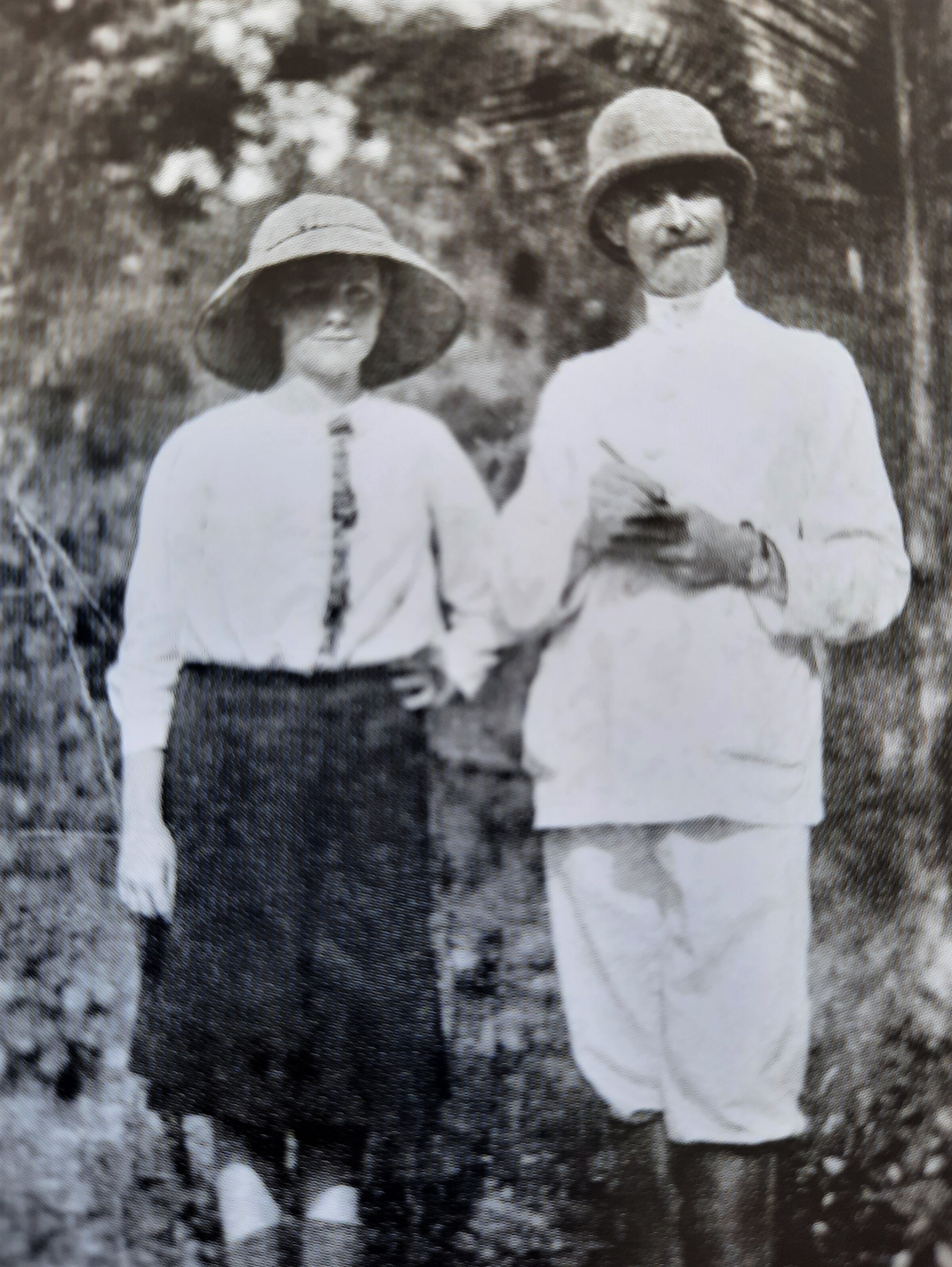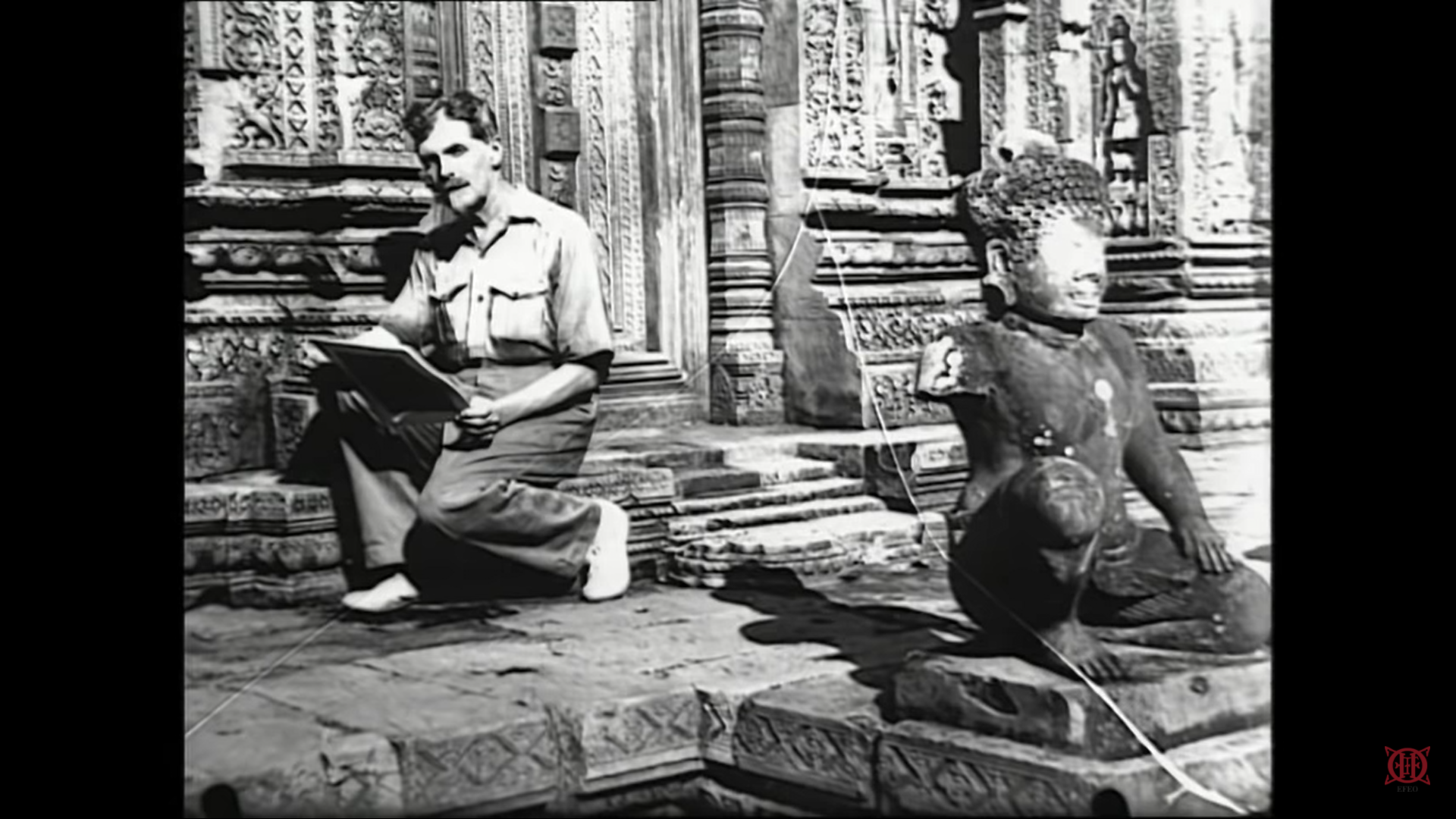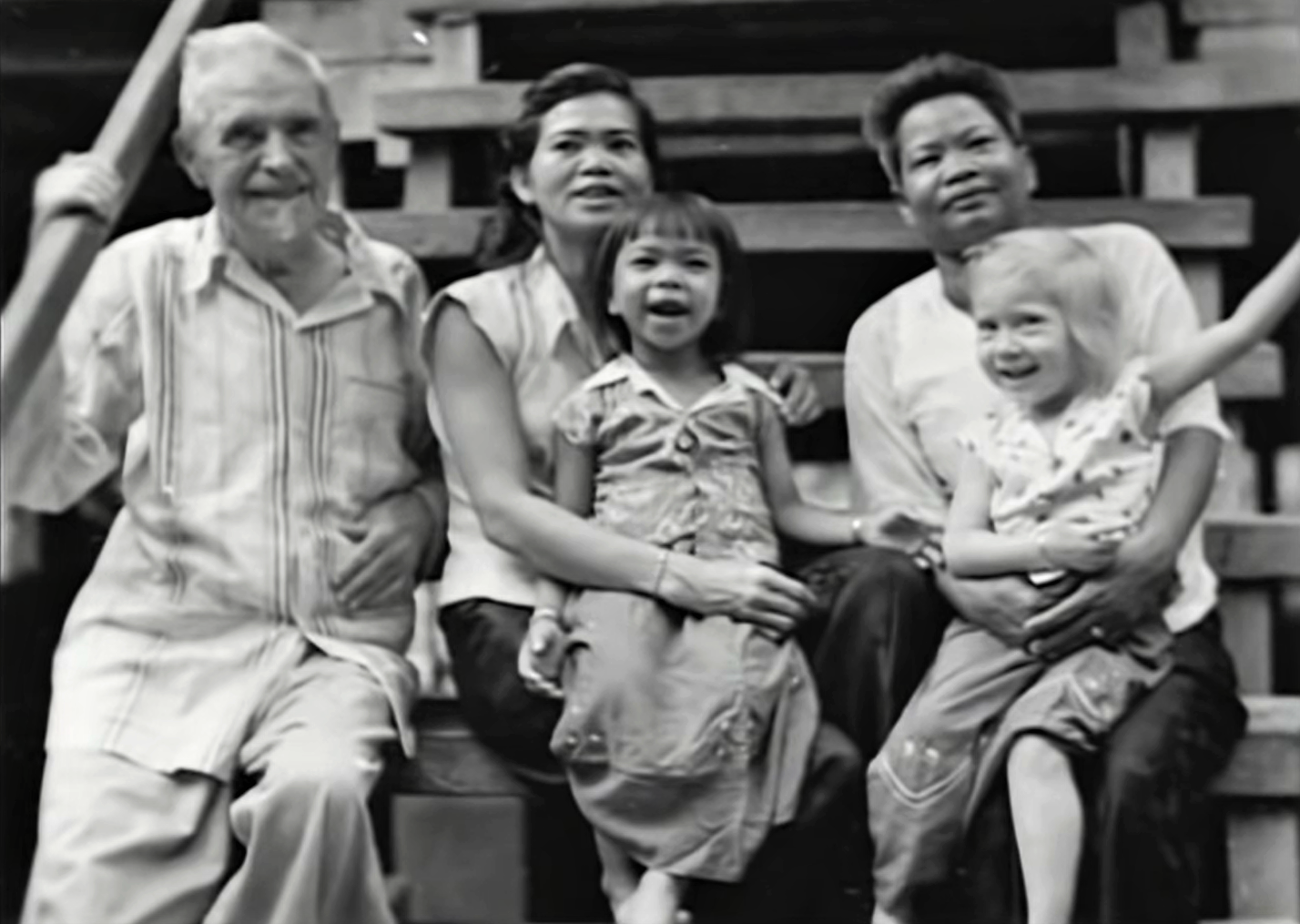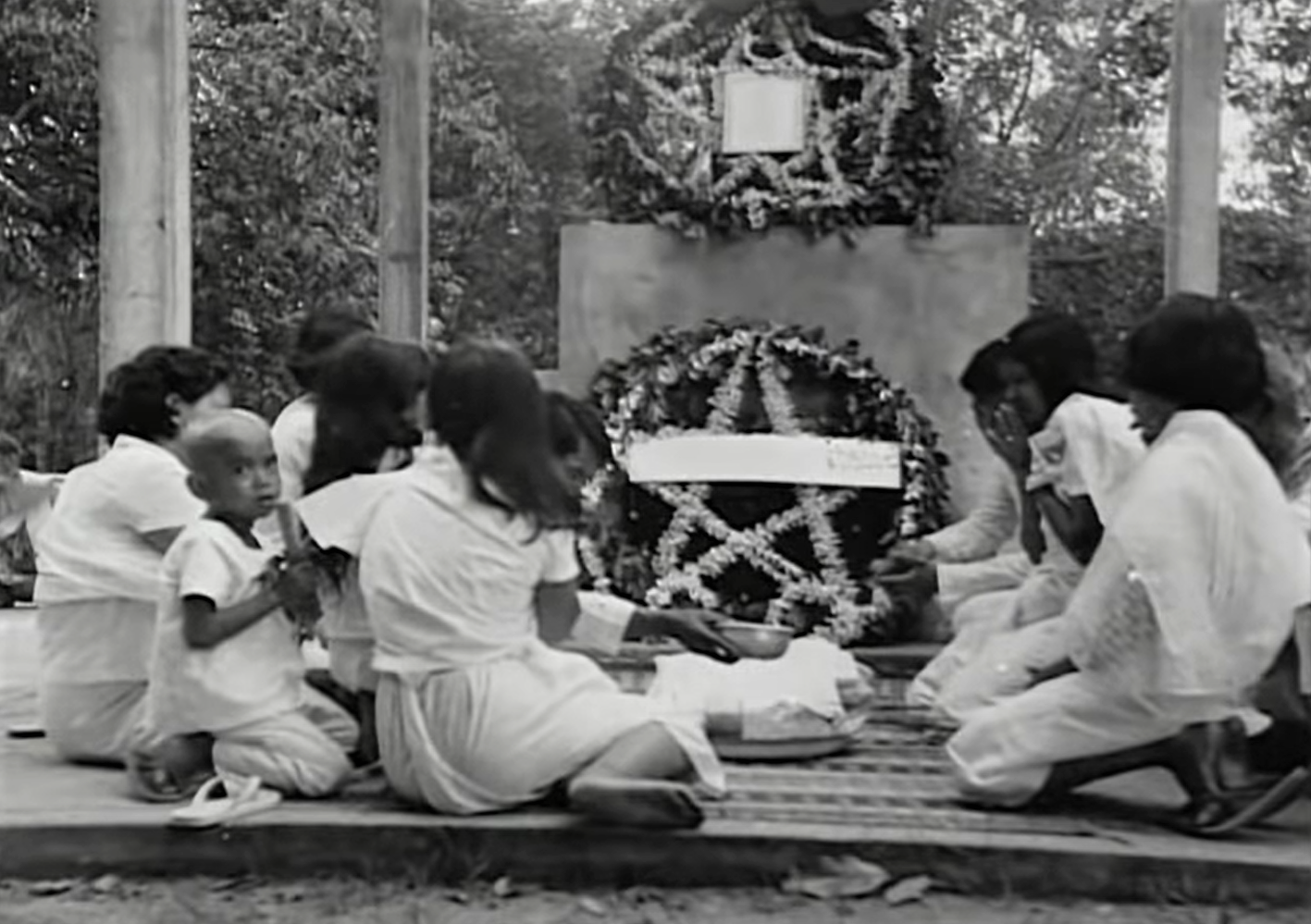Enthousiasmes, recueillements et poemes khmers
by Mary Gerny-Marchal & Henri Marchal
A poetry collection by Henri Marchal's first wife, Mary Gerny-Marchal
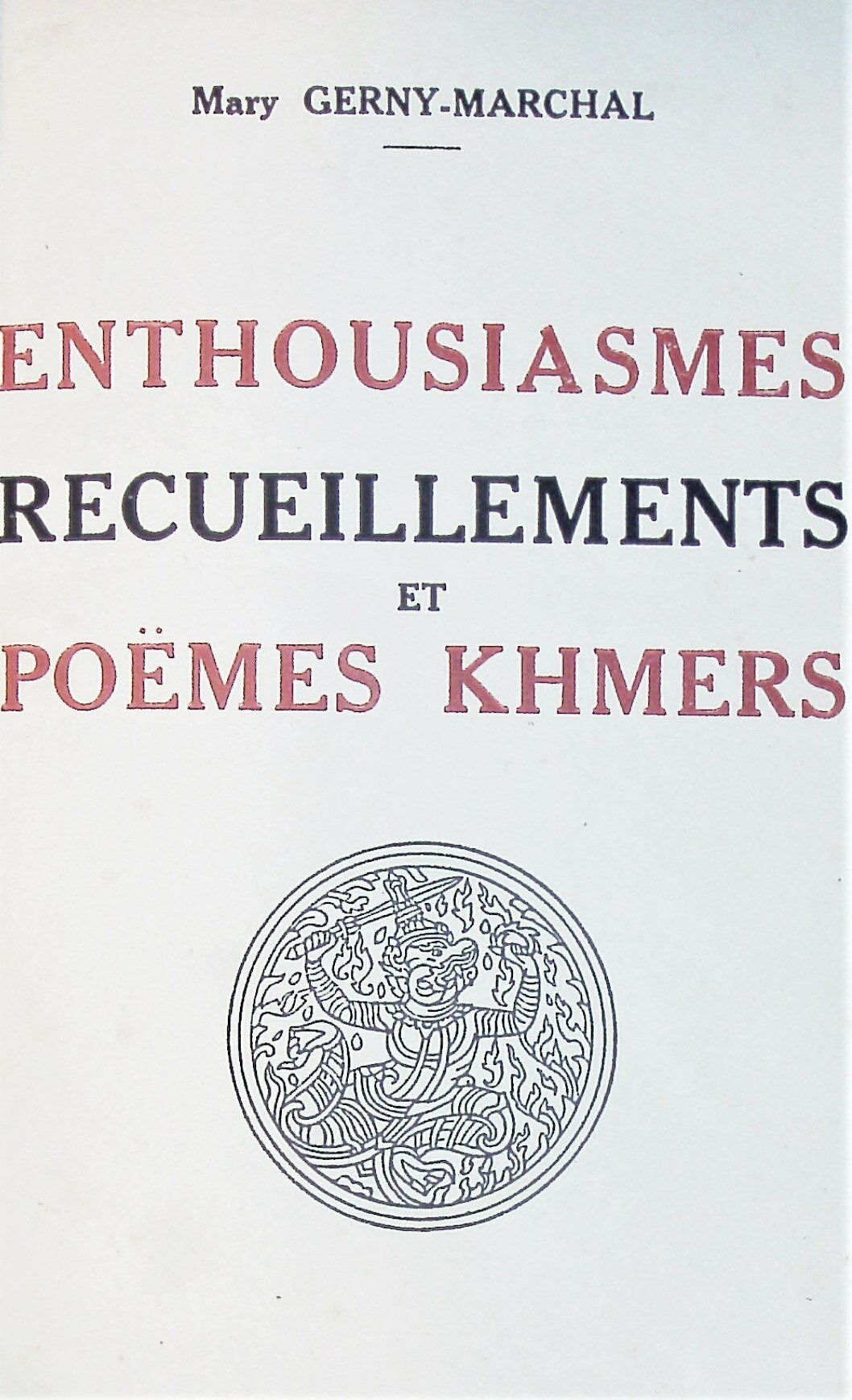
Type: on-demand books
Publisher: Self-published in Paris, 200 copies only
Edition: ADB Digital Documents | Courtesy of Angkor Village Library, Siem Reap
Published: 1945
Authors: Mary Gerny-Marchal & Henri Marchal
Pages: 106
Language : French
Mary Gerny, the French spouse of famous architect and archaeologist Henri Marchal, was cruelly impacted by the couple’s departure from Cambodia at the end of the 1930s, and by the years spent spent in occupied Paris during World War II.
After her death in 1945, Henri Marchal gathered 48 of her poems, dated from 1902 to 1937 and for the most part written in Cambodia, and published a private book (with decorative motives probably drawn by their daughter, Sappho Marchal), with only 200 copies printed.
In his Foreword, Henri Marchal notes that Mary had started to write poems in her young age — she was 15 when her first poem was published –, and was particularly inspired by Cambodia, its history and people. He recalls that at a gala dinner offered to King Sisowath in Battambang in 1907, in celebration of the Crown of Cambodia finally reclaiming the Northern provinces from Siam, Mary’s poem Danseuses Royales (Royal Dancers) was read aloud in Khmer by one guest, Charles Bellan. “The king was so impressed and moved that he immediately granted the author [Mary Gerny] the Muni Séraphon Decoration.”
Along with pieces inspired by the Bible (Sara and Hagar), Greek mythology (Prometheus), or contemporary events (“A Call to the Russian People”, written in 1917), the poetess devoted many verses to Angkor, the Khmer classical dance, and Cambodian folktales.
email hidden; JavaScript is required
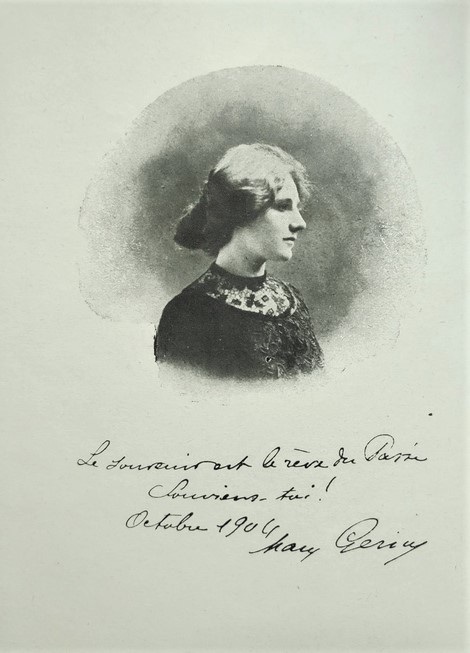
Ex libris with Mary’s portrait and some of her words, written in October 1904: “Le souvenir est le rêve du passé. Souviens toi!” [Remembrance is Past dreaming. Remember!]
ADB input: Henri Marchal took this opportunity to paid tribute to Mary Gerny’s “constant help and support” in his work as Head of the Angkor Conservation, in gathering documentation, filing reports, photographying sites…
Tags: poetry, King Sisowath, French explorers, archaeology, folktales
About the Authors
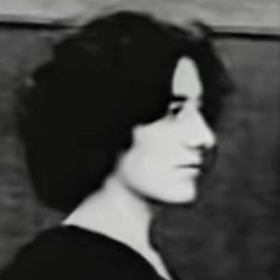
Mary Gerny-Marchal
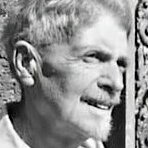
Henri Marchal
Henri Marchal (24 June 1876, Paris — 12 Apr. 1970, Siem Reap), director of the Archaeology Department at the École française d’Extrême-Orient, served as Chief Conservator of Angkor from 1916 — after Jean Commaille was killed by looters — to 1936, and then again after Second World War II, from 1947 to 1953, substituting Maurice Glaize.
Traveling extensively through the Far East (and also Egypt and Greece), the tireless architect and archaeologist led the discovery and restoration of multiple Angkorian sites, from Angkor Thom’s Victory Gate to the Elephants Terrace to the Bakheng Temple, Preah Khan, Banteay Srei, and many more.
In 1930, Henri Marchal had studied during a trip to Java and Bali the anastylosis technique, invented by a team led by the scholar Stein-Callenfels (1883−1938) from the Netherlands Indies Archaeological Service in Java. For the first time, he applied this method to the Banteay Srei temple, having the remaining structure taken apart piece by piece, each numbered, and the stones reassembled one by one.
After wife Mary Gerny-Marchal’s death in 1945 in Paris, Marchal resolved to come back to Cambodia, but first edited a posthumous homage, Enthousiasmes, Recueillements et Poemes Khmers, collecting poems written by Mary in the 1920s and 1930s. His first task upon returning was the restoration of Angkor Wat South Gallery, which had partly collapsed during World War II and the Thai bombings of the area.
Officially retired in 1957, he spent the rest of his life in his house by the Siem Reap River with his Khmer wife, Neang Niv, working on his Nouveau Guide d’Angkor (published in 1961), writing, reading and listening to music. After his death in 1970, he was “incinerated as a simple Khmer”, to quote his eldest daughter, Sappho Marchal.

